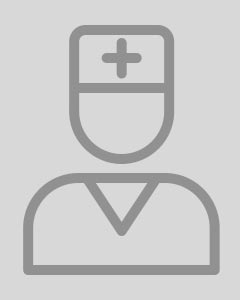What is adult degenerative scoliosis?
Scoliosis is one of the most common spinal conditions, affecting approximately 5 to 7 million people in the United States alone. Scoliosis, which is an abnormal or exaggerated curvature of the spine, is most commonly diagnosed in children and adolescents. However, scoliosis may also be diagnosed later on in a person’s life. This condition, known as adult degenerative scoliosis, is different from the type of scoliosis that occurs in children and adolescents. Adult degenerative scoliosis develops after the spine has stopped growing, and it is typically caused by general wear and tear due to aging.
The spine is comprised of 24 movable bones, called vertebrae. The vertebrae stack on top of each other and are padded by intervertebral discs. These discs are fluid-filled cushions that help the spine absorb shock. Between each vertebra are two facet joints, with one on each side of the spine. The facet joints are made up of small, bony knobs that connect together and link the vertebrae, allowing you to move and bend forward and backward. However, when the facet joints and intervertebral discs begin to deteriorate due to aging, adult degenerative scoliosis can occur.
Causes of Adult Degenerative Scoliosis
While the exact cause of adult degenerative scoliosis is not always known, there are several common factors that may lead to the development of this condition. Common causes include:- Deterioration of the spine over time due to previous spinal surgery
- Previous surgery for spinal stenosis, which involves decompressing the nerves by removing bones and ligaments
- Spinal fusion that did not heal properly
- Progressive changes in the bones or discs above or below a previous spinal fusion
- Loss of the normal curvature of the lumbar spine following a spinal fusion
- Traumatic injury to the spinal column
Symptoms of Adult Degenerative Scoliosis
If left untreated, adult degenerative scoliosis can often be a painful and debilitating condition. Common symptoms may include:- Severe low back pain
- Severe pain or numbness radiating down the lower extremities
- Weakness of the lower extremities
- Pain in the thighs when standing for long periods of time
- Posture that is stooped forward
- Leaning to one side due to trunk, or torso, imbalance
- Walking difficulties due to leg length discrepancies
Diagnosing Adult Degenerative Scoliosis
When assessing a patient with degenerative scoliosis, the patient's sagittal balance, or posture, must first be examined by performing a series of X-rays. Ideal posture places a person’s ears directly over the shoulders and hips. As scoliosis develops, a person may naturally begin to rotate the hips or bend the knees in order to maintain normal posture alignment. However, no matter how much the body tries to compensate, the patient will eventually start to develop a stooped posture.
In addition to examining posture, a specialist will typically perform a CT scan or MRI of the spine to assess compression of the nerves and spinal cord. A bone mineral density study may also be necessary to check for osteoporosis, particularly if the patient has previously had spinal surgery.
Treatment Options for Adult Degenerative Scoliosis
If you have been diagnosed with adult degenerative scoliosis, there are plenty of effective nonsurgical treatment options available. A simple pain medication may be sufficient to relieve the symptoms associated with degenerative scoliosis. For example, in less severe cases, I will typically prescribe an over-the-counter analgesic, oral narcotic, anti-inflammatory medication or medication for nerve pain. This usually helps to relieve pain, which significantly improves the patient’s quality of life.Steroid injections may provide relief from nerve pain as well, or they can also be used to determine which specific nerves are being compressed. In some cases, I may attempt treatment with physical therapy to help my patients strengthen their abdominal and back muscles. While physical therapy is often a successful form of treatment, bracing is usually not a favorable option, as it does not help to minimize or prevent progression of scoliosis.
Surgical treatment of degenerative scoliosis is typically reserved for patients whose quality of life has been significantly affected by lower back or leg pain. The goal of the surgery is to recreate proper alignment of the spine in order to restore normal posture, decompress the nerves and treat pain. In most cases, however, postoperative recovery requires a high degree of supervision and care, and many patients will need postoperative rehabilitation to help with the recovery process. Because of the complexity of surgical treatment for scoliosis, it should only be considered as a last resort in very severe cases.
If you are experiencing severe lower back or leg pain, call 321.842.5027 to schedule an appointment with our practice today. Our team is here to help you.







